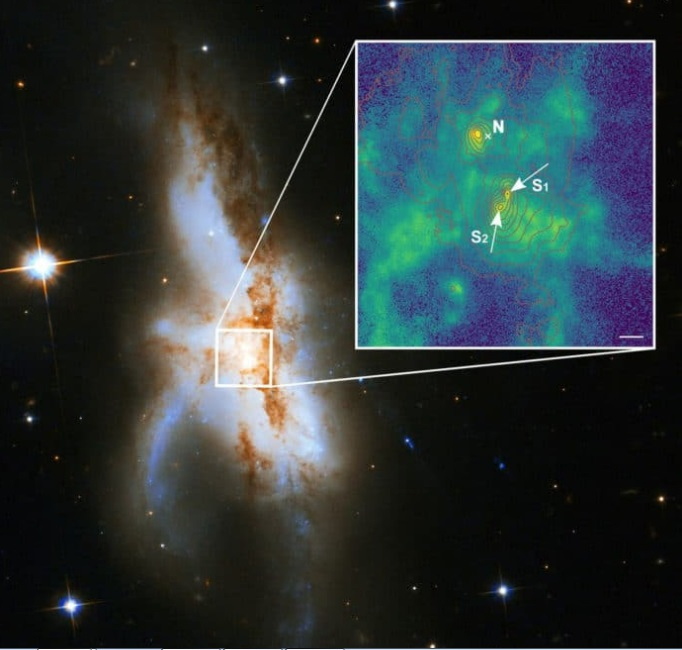A team of international scientists have captured three supermassive black holes for the first time at the centre of the galaxy NGC 6240, known as an irregular galaxy due to its particular shape. The observations, published in the journal Astronomy & Astrophysics, indicated that the three black holes are extremely close to each other, which is unusual.

The researchers, led by scientists from Göttingen and Potsdam, made the observations using the 8-meter VLT, a telescope which is operated by the European Southern Observatory in Chile. The scientists utilized the 3D Muse spectrograph in high-resolution spatial mode together with four artificially produced laser stars and an adaptive optics system.
Till this discovery, the scientists used to consider that the galaxy NGC 6240 is formed due to the collision of two smaller galaxies and thus it contains two black holes in its core. It was believed that these galactic ancestors moved towards each other at a velocity of several 100 km/s and are still in the process of merging.
Professor Wolfram Kollatschny from the University of Göttingen said: "Through our observations with an extremely high spatial resolution we were able to show that the interacting galaxy system NGC 6240 hosts, not two – as previously assumed – but three supermassive black holes in its center."
Each of the three heavyweights has a mass of more than 90 million Suns and are located in a region of space less than 3000 light-years across, or less than one-hundredth of the total size of the galaxy.
According to the scientists, the images were taken using a sophisticated technology with a sharpness like that of the Hubble Space Telescope and contains a spectrum for each image pixel. Those spectra were extremely helpful in deciding the movement and masses of the supermassive black holes in NGC 6240.
First evidence
Dr. Peter Weilbacher, Leibniz Institute for Astrophysics Potsdam (AIP), said, "Up until now, such a concentration of three supermassive black holes had never been discovered in the universe. The present case provides evidence of a simultaneous merging process of three galaxies along with their central black holes."
Until now it has not been possible to explain how the largest and most massive galaxies were formed just by normal galaxy interaction and merging processes over the previous 14 billion years or the age of our universe, he added.









